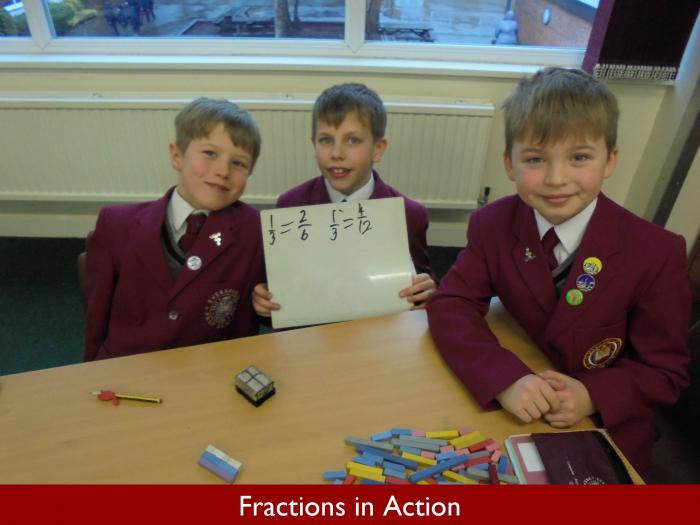
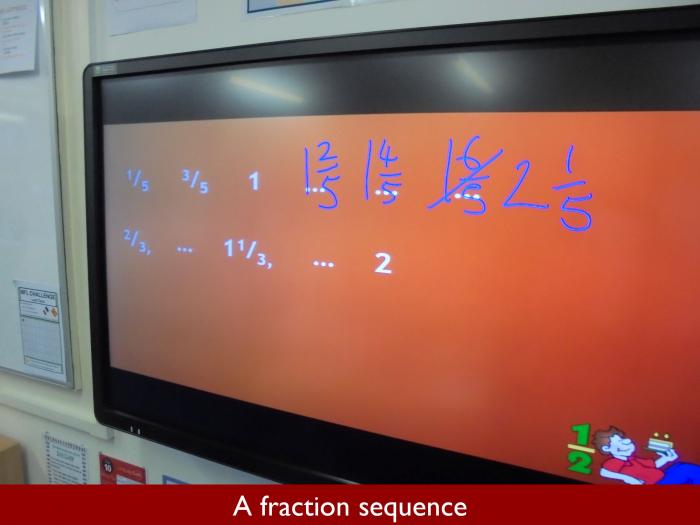
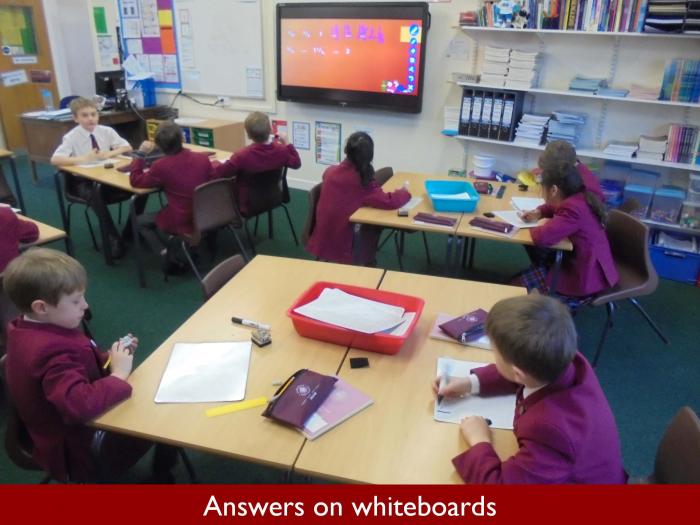
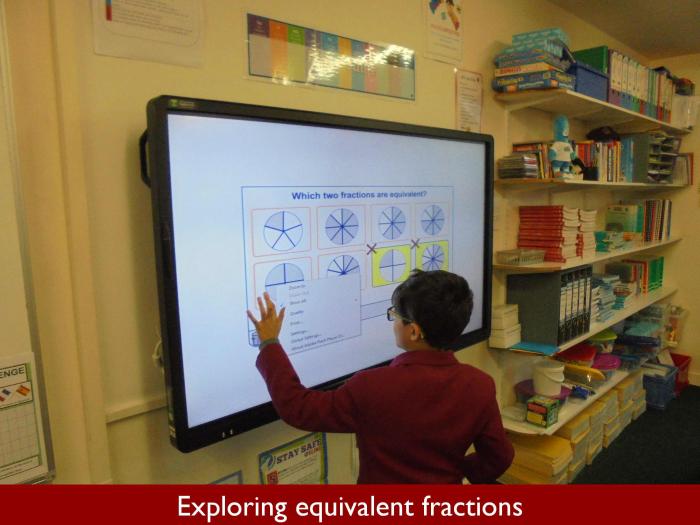
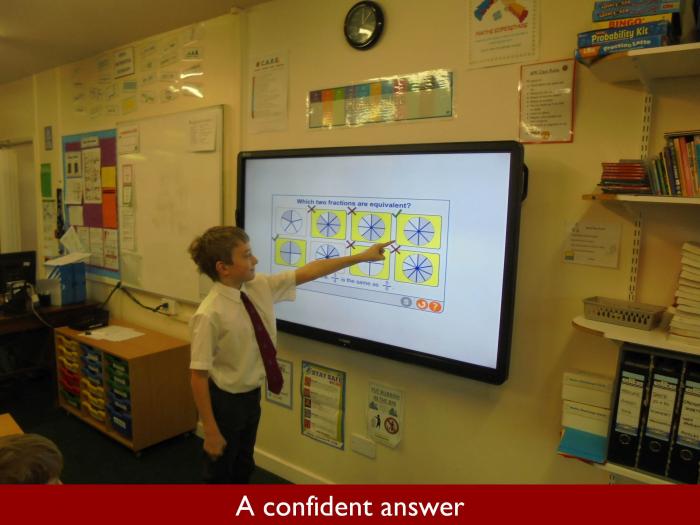
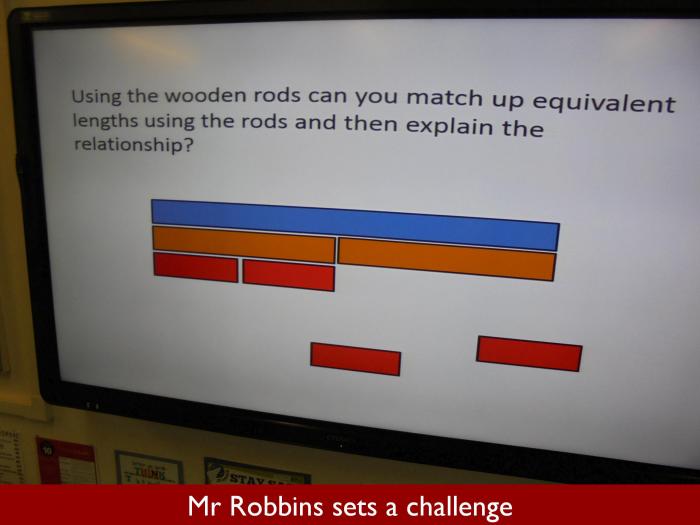
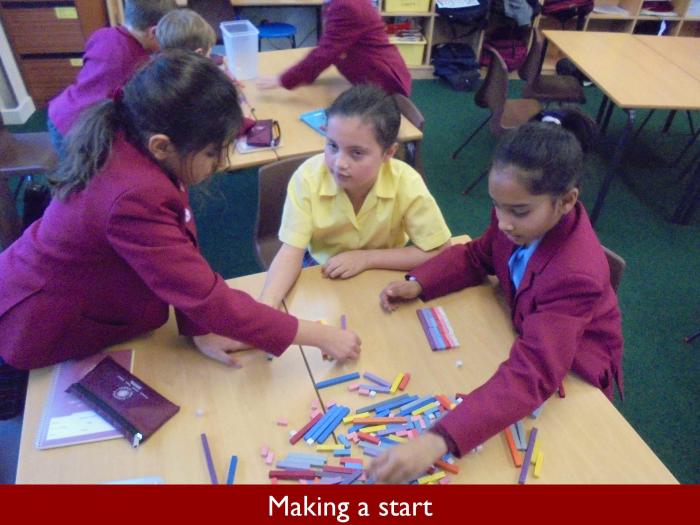
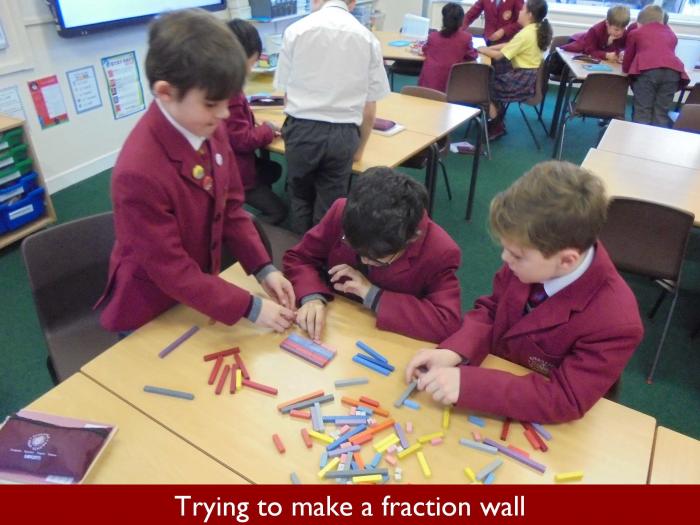
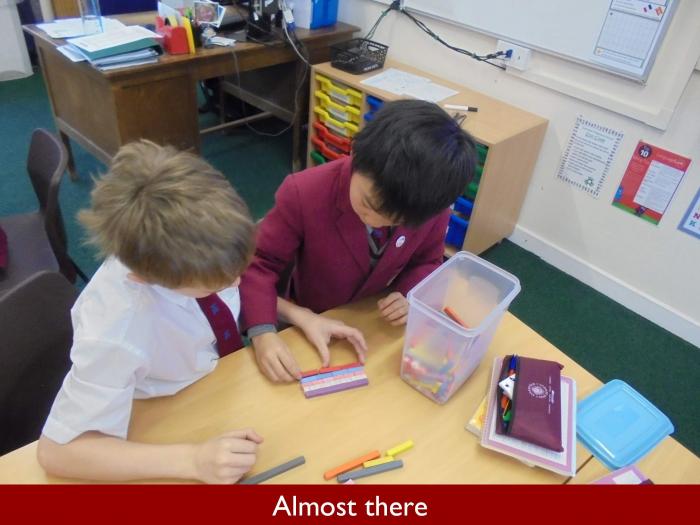
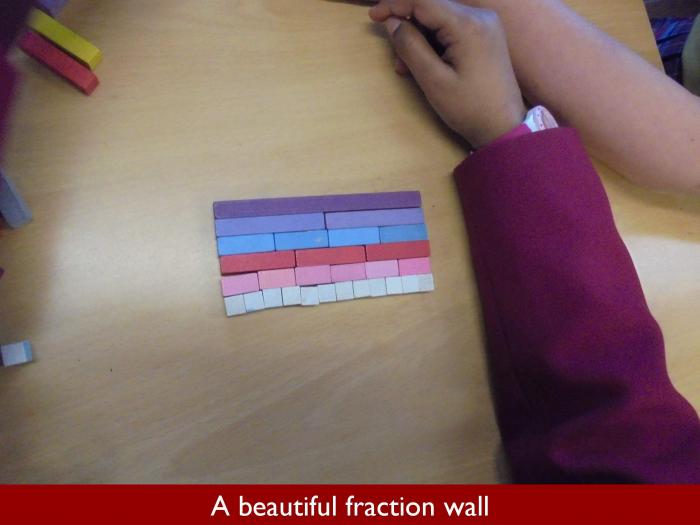
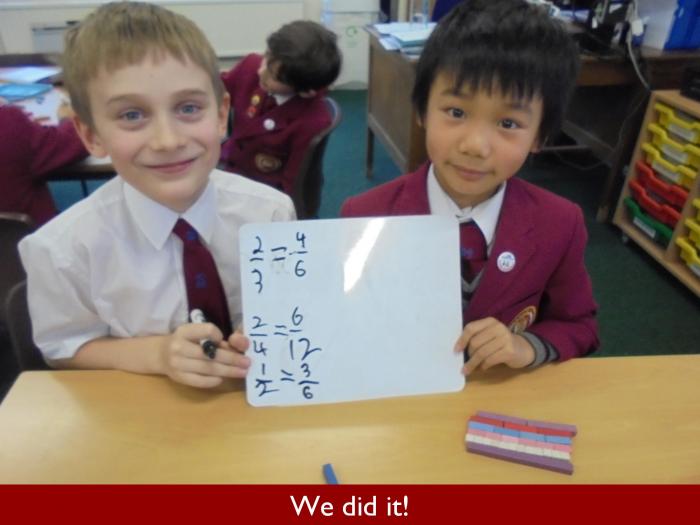
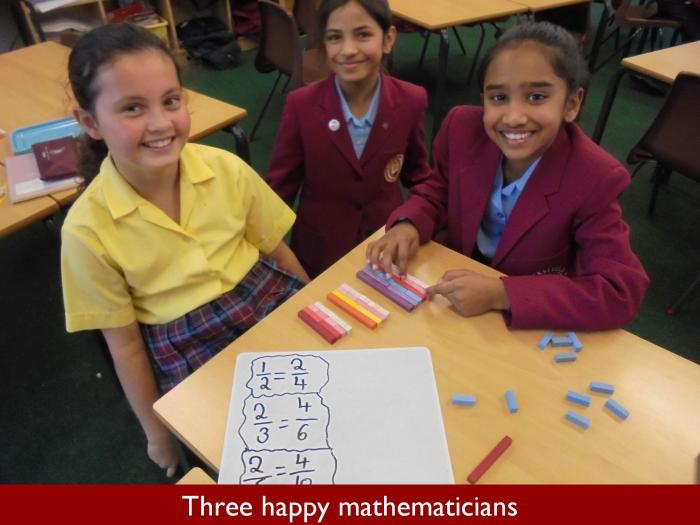
Fractions in Action
There has been an outbreak of fractions in Eversfield at the moment. We are working on them in Form 3, and they are also the current focus in Form 4, where Mr Robbins’ children have been exploring equivalent fractions.
On the face of it, fractions should be easy to understand. A whole cake or pizza, or whatever you can get your hands on, is split into equal parts known as fractions. The bottom number of the fraction, the denominator, tells us how many equal parts the whole has been divided into; the top number, or numerator, represents the number of the equal parts we have. What could be simpler!
Yet, with fractions, it’s not very long before something occurs to muddy the waters. A child who can accurately colour in one fifth of a circle divided into fifths may stumble when asked to colour in the same fraction if the circle has been divided into tenths. This is where an understanding of equivalent fractions comes in very handy, and Mr Robbins’ objective was to help the children find practical methods to avoid this pitfall.
The lesson started with a look at some fraction sequences on the whiteboard. Mr Robbins’ sequences included some mixed numbers and improper fractions, provoking a good deal of discussion as the children sought to test their understanding. In a child’s mind, given that six is a larger number than five, it is hard to accept that one sixth is a smaller fraction of a whole than one fifth, unless you do it practically and show that, by dividing the whole into more parts, each share will be smaller.
Children, too, are attracted by practicality, so Form 4 were delighted when Mr Robbins asked them to build a fraction wall using Cuisenaire rods. Mika declared that the experience was much more enjoyable than it would have been if he had been asked to write things down. Oscar felt that using blocks made the process more understandable than a written method would have been. When constructing the wall, the children had to find different ways of making one using sets of rods. The rods had to be the same colour – and thus the same length – otherwise you would have a fraction with unequal parts. Mr Robbins said he wasn’t particularly keen to hear people telling him that three thirds are equivalent to one. For him, what was interesting was the discovery that two sixths are the same as one third, four eighths are equivalent to a half, and so on. In building the walls, the children were able to see that the fractions go together in families, such as halves, quarters and eighths, where the denominator is double the numerator each time.
By the end of the lesson, the children were pleased with what they had learnt. Faizan declared contentedly that the practical work had helped the concept click for him, and now he was very good at it.
Next time, Mr Robbins will move on to explore how multiplication can be used to make a link between fractions, which is a step on the way to investigating common denominators.